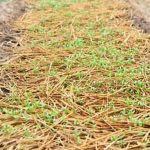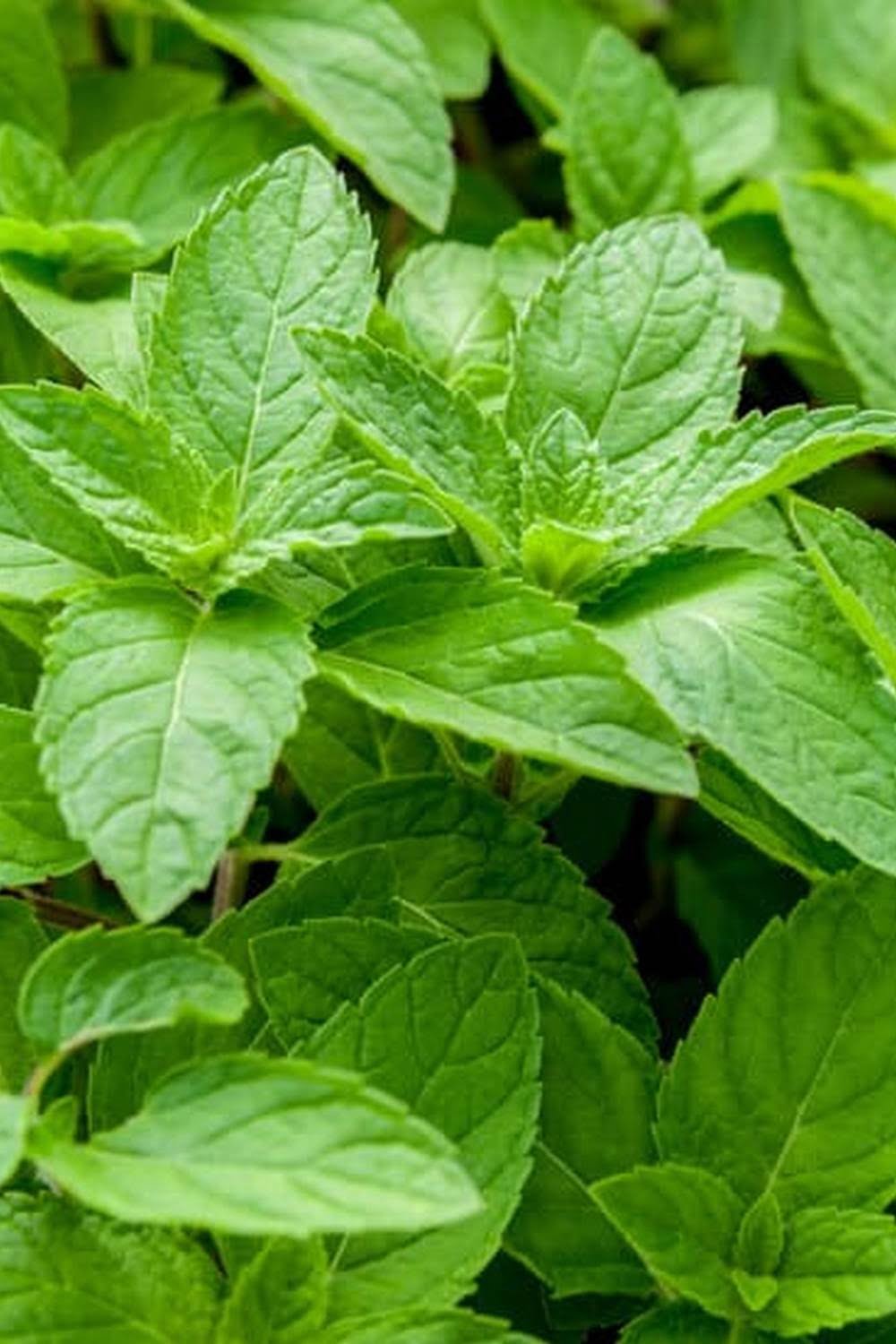Weed control fabric for vegetable gardens is an essential tool in maintaining a healthy and productive garden. This fabric helps prevent the growth of unwanted weeds, conserves soil moisture, and promotes healthier plants. In this article, we will explore the various benefits of using weed control fabric in vegetable gardens, the different types available, proper installation techniques, maintenance tips, and best practices for maximizing its effectiveness.
When it comes to vegetable gardening, weed control is crucial for the overall success of the garden. Weed control fabric provides a physical barrier that inhibits weed growth while allowing air and water to penetrate the soil. This leads to improved plant growth and higher crop yields. Whether you are a beginner or seasoned gardener, understanding the significance of weed control fabric is vital for creating a thriving vegetable garden.
In the following sections, we will delve into the numerous benefits of using weed control fabric in your vegetable garden and discuss the different types available. Additionally, we will provide expert tips for installation and maintenance, as well as common misconceptions that surround this method of weed management. By the end of this article, you’ll have a comprehensive understanding of how weed control fabric can contribute to a successful vegetable garden.
Benefits of Using Weed Control Fabric in Vegetable Gardens
Using weed control fabric in vegetable gardens offers numerous benefits that can improve the overall health and yield of your crops. Here are some of the key advantages of using this fabric:
1. Weed Suppression: One of the main benefits of using weed control fabric is its ability to suppress the growth of unwanted weeds. This helps reduce the competition for nutrients and water, allowing your vegetables to thrive without being hindered by pesky weeds.
2. Moisture Retention: Weed control fabric also acts as a barrier to help retain moisture in the soil. This is particularly beneficial during hot and dry periods, as it reduces the need for frequent watering while ensuring that your vegetable plants have consistent access to essential moisture.
3. Temperature Regulation: By covering the soil with weed control fabric, you can help regulate the temperature around your vegetable plants. This can protect delicate seedlings from extreme heat or cold, creating a more stable environment for optimal growth.
4. Improved Aesthetic and Organization: In addition to its functional benefits, weed control fabric can also enhance the overall appearance of your vegetable garden. The uniform surface creates a tidy and organized look, making it easier to maintain and visually appealing.
To maximize these benefits, it’s important to carefully select and properly install the right type of weed control fabric for your vegetable garden. Different options are available, including biodegradable fabrics, woven materials, and permeable membranes designed to meet specific gardening needs.
When choosing a weed control fabric for your vegetable garden, consider factors such as durability, permeability, and suitability for different types of crops. For example:
- Biodegradable fabrics are environmentally friendly options that break down naturally over time.
- Woven fabrics offer long-lasting durability and effective weed suppression.
- Permeable membranes allow water and nutrients to pass through while still inhibiting weed growth.
Proper installation and maintenance play a crucial role in maximizing the effectiveness of weed control fabric in vegetable gardens. This includes securing the fabric securely over the soil but allowing enough space for plant growth, as well as regularly checking for any signs of damage or deterioration.
By understanding these benefits and employing best practices for using weed control fabric in vegetable gardens, you can significantly improve growing conditions while minimizing the effort needed for ongoing maintenance and care.
Types of Weed Control Fabric Available for Vegetable Gardens
Weed control fabric is a valuable tool for maintaining the health and productivity of a vegetable garden. There are various types of weed control fabric available, each with its unique features and benefits. Understanding the options will help gardeners choose the best fit for their specific needs.
One common type of weed control fabric for vegetable gardens is woven polypropylene fabric. This type of fabric is durable and allows water to penetrate the soil while blocking out sunlight to inhibit weed growth. Another option is non-woven landscape fabric, which also suppresses weeds while allowing air, water, and nutrients to reach the plants’ roots. Biodegradable weed control fabric is an environmentally friendly choice that breaks down over time, providing natural mulch for the garden.
| Type of Weed Control Fabric | Main Features |
|---|---|
| Woven Polypropylene Fabric | Durable, allows water penetration, inhibits weed growth |
| Non-woven Landscape Fabric | Suppresses weeds, allows air and water penetration |
| Biodegradable Weed Control Fabric | Environmentally friendly, breaks down over time |
Choosing the right type of weed control fabric is essential for ensuring its effectiveness in a vegetable garden. Consider factors such as soil type, climate conditions, and specific plant needs when making this decision. A well-chosen weed control fabric can significantly reduce maintenance efforts and promote optimal plant growth.
How to Properly Install Weed Control Fabric in a Vegetable Garden
Weed control fabric is an essential tool for maintaining a healthy and productive vegetable garden. Proper installation of the fabric is crucial to ensure its effectiveness in suppressing weed growth and promoting the successful growth of your vegetables. In this section, we will discuss the steps on how to properly install weed control fabric in a vegetable garden.
First and foremost, it is important to prepare the soil before laying down the weed control fabric. Remove any existing weeds, rocks, and debris from the area where you will be installing the fabric. This will create a clean and smooth surface for the fabric to lay on, preventing any lumps or bumps that could compromise its coverage.
Once the soil is prepared, roll out the weed control fabric over the designated area and cut it to fit using scissors or a utility knife. Overlap the edges of each piece by several inches to ensure there are no gaps where weeds can emerge. Secure the fabric in place using landscape staples or pins, especially along the edges and at regular intervals throughout the garden bed.
After securing the weed control fabric, consider adding mulch or gravel on top to provide additional weight and protection against UV rays. This not only enhances the appearance of your vegetable garden but also improves the durability and longevity of the fabric.
Another key step in properly installing weed control fabric is creating planting holes for your vegetables. Use a sharp tool or scissors to make small X-shaped cuts in areas where you plan to plant your vegetables. Then fold back the flaps of fabric to expose the soil underneath, allowing you to plant your seeds or seedlings directly into the ground while still benefiting from effective weed suppression.
| Steps | Details |
|---|---|
| Prepare soil | Remove weeds, rocks, and debris |
| Lay out fabric | Cut to fit, overlap edges, secure with staples/pins |
| Add mulch/gravel | Enhances appearance and durability |
| Create planting holes | Make X-shaped cuts for plants/seeds |
Weed Control Fabric Maintenance and Longevity
Weed control fabric is a valuable tool in maintaining a healthy and productive vegetable garden. However, in order to fully enjoy the benefits of this fabric, proper maintenance is essential. Here are some tips for maintaining weed control fabric and maximizing its longevity:
- Regular Inspections: Periodically check the weed control fabric for any signs of damage, such as tears or fraying. Addressing these issues early on can prevent further damage and prolong the life of the fabric.
- Cleaning: Over time, debris and dirt can accumulate on the surface of the weed control fabric, diminishing its effectiveness. Use a gentle brush or hose to clean the fabric and remove any buildup.
- Mulching: Adding a layer of mulch on top of the weed control fabric can provide additional protection and insulation. This not only helps with weed suppression but also shields the fabric from direct sun exposure, which can cause it to deteriorate over time.
- Proper Storage: During off-seasons or when not in use, store weed control fabric in a cool, dry place away from direct sunlight. This helps prevent premature degradation due to UV exposure.
When properly maintained, weed control fabric can last for multiple growing seasons, making it a cost-effective solution for keeping weeds at bay in vegetable gardens.
By incorporating these maintenance practices into your gardening routine, you can ensure that your weed control fabric remains effective and durable for years to come.
Best Practices for Using Weed Control Fabric in Different Types of Vegetable Gardens
Container Gardens
For vegetable gardens grown in containers, using weed control fabric can be a game-changer. When selecting weed control fabric for container gardens, it’s important to choose a breathable and flexible material that will conform to the shape of the containers.
Proper installation involves cutting the fabric to fit the size of the containers and then covering it with a layer of soil or mulch. This method not only helps prevent weeds from growing but also retains moisture, making it an efficient way to maintain a healthy vegetable garden in limited space.
Raised Bed Gardens
Weed control fabric is also beneficial for raised bed gardens, as it helps maintain the structure and cleanliness of the garden. When using weed control fabric in raised bed gardens, it’s vital to choose a durable and UV-resistant material that can withstand various weather conditions.
Proper installation includes securing the fabric along the edges of the raised beds and carefully cutting holes for planting vegetables. This method not only suppresses weed growth but also promotes proper drainage and prevents soil erosion in raised bed gardens.
In-Ground Gardens
In-ground vegetable gardens can greatly benefit from using weed control fabric as well. When selecting a weed control fabric, consider choosing one that is permeable enough to allow air, water, and nutrients to reach the soil while preventing weeds from proliferating.
Properly installing the fabric involves laying it directly over prepared soil before planting vegetables or covering it with mulch after planting. Weed control fabric supports healthy root development while keeping weeds at bay in in-ground vegetable gardens, making maintenance more manageable throughout the growing season.
Common Misconceptions About Weed Control Fabric in Vegetable Gardens
Myth: Weed Control Fabric Restricts Plant Growth
Some gardeners may believe that using weed control fabric can hinder the growth of their vegetable plants. However, when properly installed and maintained, weed control fabric allows for proper water and nutrient penetration to the soil, allowing plants to thrive. In fact, by preventing weed competition and maintaining a consistent soil temperature, the use of weed control fabric can actually promote healthier and more robust vegetable growth.
Myth: Weed Control Fabric Is Only for Large-Scale Farms
Another common misconception is that weed control fabric is only suitable for commercial or large-scale vegetable gardens. On the contrary, weed control fabric can be just as beneficial in small home vegetable gardens. Its ability to reduce time spent weeding and improve overall plant health makes it an attractive option for any size garden.
Myth: Weed Control Fabric Is Expensive and Not Worth the Investment
Some gardeners may shy away from using weed control fabric due to perceived costliness. While there is an initial investment involved in purchasing and installing the fabric, its durability and long-term effectiveness make it a worthwhile investment. Additionally, when considering the time saved on weeding and the potential increase in vegetable yield, many gardeners find that the benefits far outweigh the initial cost.
Expert Tips for Maximizing the Effectiveness of Weed Control Fabric in Vegetable Gardens
Weed control fabric can be a valuable tool in maintaining a healthy and productive vegetable garden. However, to truly maximize its effectiveness, it’s important to follow some expert tips for using and maintaining the fabric.
One key tip is to choose the right type of weed control fabric for your specific vegetable garden. There are different types available, such as woven or non-woven, and selecting the appropriate one can make a significant difference in the success of your garden.
Proper installation of the weed control fabric is also essential for achieving optimum results. Ensuring that the fabric is placed securely and that there are no gaps or overlaps will help prevent weeds from penetrating through. Additionally, it’s important to properly anchor the fabric with staples or other securing methods to keep it in place during heavy wind or rain.
Another expert tip for maximizing the effectiveness of weed control fabric in vegetable gardens is regular maintenance. While the fabric does an excellent job of suppressing weeds, it’s not completely maintenance-free. Checking for any tears or rips in the fabric, as well as clearing any debris that may accumulate on top of it, will help prolong its longevity and functionality.
In addition to these tips, it’s also crucial to consider best practices for using weed control fabric in different types of vegetable gardens. For example, raised bed gardens may require different installation techniques compared to traditional ground-level gardens. By understanding how to tailor the use of weed control fabric to different gardening setups, you can ensure that it provides maximum benefit for your specific needs.
Conclusion
In conclusion, using weed control fabric in vegetable gardens offers numerous benefits and is an essential tool for promoting healthy plant growth. The utilization of weed control fabric not only helps in preventing the growth of unwanted plants but also aids in retaining moisture, promoting proper soil temperature, and reducing the need for excessive watering and maintenance.
By inhibiting weed growth, the fabric contributes to a healthier garden environment and ensures that your vegetables receive the nutrients they need without competing with invasive weeds.
It is imperative to note that there are different types of weed control fabric available for vegetable gardens, each tailored to specific needs and preferences. From biodegradable options to woven and non-woven materials, gardeners have a range of choices to suit their individual requirements.
Additionally, proper installation and maintenance of the fabric are crucial for maximizing its effectiveness. By correctly laying down the fabric and regularly checking for any damage or signs of wear, gardeners can ensure its longevity and sustained benefits for their vegetable plots.
To maximize the effectiveness of weed control fabric for vegetable gardens, consider employing best practices such as proper spacing between plants, using mulch on top of the fabric, and selecting a suitable type of fabric based on your garden’s specific conditions. It is also important to be mindful of common misconceptions about weed control fabric, such as it hindering natural soil processes or being detrimental to beneficial insects.
By addressing these misconceptions and following expert tips for utilizing weed control fabric effectively in vegetable gardens, gardeners can experience enhanced productivity and reduced maintenance efforts in their gardens.
In summary, weed control fabric for vegetable gardens serves as an indispensable tool in maintaining a clean and healthy growing environment for crops. By understanding its benefits, types available, installation processes, maintenance requirements, best practices, common misconceptions, and expert tips for its usage, gardeners can make informed decisions about integrating this valuable resource into their gardening practices. Ultimately, utilizing weed control fabric empowers gardeners to efficiently manage their vegetable plots while reaping abundant harvests year after year.
Frequently Asked Questions
Is Weed Fabric Safe for Vegetable Gardens?
Weed fabric can be safe for vegetable gardens when used correctly. It helps to prevent weeds from growing, which can reduce the need for chemical herbicides. However, it’s essential to choose a fabric that allows water and nutrients to penetrate the soil.
What Is the Best Weed Barrier for Vegetable Garden?
The best weed barrier for a vegetable garden will depend on various factors such as the specific needs of the garden, climate, and personal preferences. Some popular options include landscape fabric, cardboard, or even a thick layer of mulch.
How Do You Install a Weed Barrier in a Vegetable Garden?
To install a weed barrier in a vegetable garden, start by preparing the soil by removing any existing weeds and debris. Then lay the barrier material over the soil, ensuring it covers the entire area where you want to plant your vegetables.
Secure the edges of the barrier with stakes or rocks to keep it in place. Finally, cut holes in the fabric where you want to plant your vegetables and make sure to secure the edges of these holes as well to prevent weed growth around them.

If you’re looking to get into vegetable gardening, or are just looking for some tips on how to make your current garden better, then you’ve come to the right place! My name is Ethel and I have been gardening for years. In this blog, I’m going to share with you some of my best tips on how to create a successful vegetable garden.





